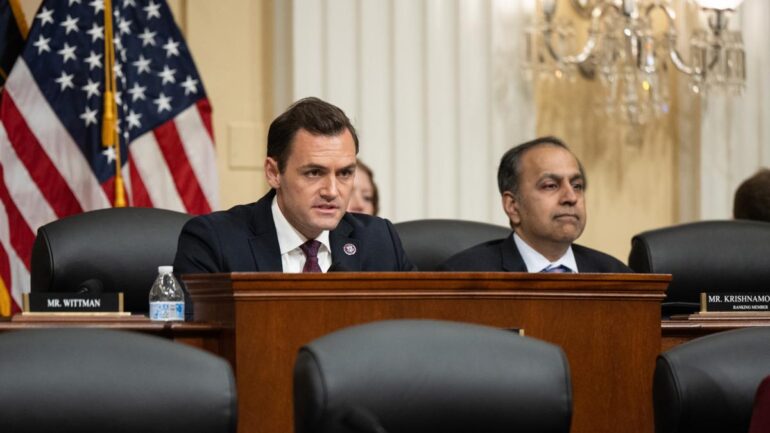TL;DR:
- American lawmakers, Mike Gallagher and Raja Krishnamoorthi, express dissatisfaction with current US efforts to limit AI chip exports to China.
- Existing trade restrictions are seen as inadequate to prevent circumvention through “clever engineering” techniques by Chinese chipmakers.
- Last year, the Biden administration imposed trade restrictions on Chinese chip manufacturers, targeting certain components used in AI applications.
- Chipmakers like Nvidia and Intel found ways to comply with regulations while still exporting modified versions of their GPUs and accelerators.
- Gallagher and Krishnamoorthi call for even stricter controls to protect US technology and interests.
- Executives from Intel and Qualcomm voice concerns over potential impacts on their businesses due to stiffer export controls.
- The US Semiconductor Industry Association (SIA) urges for de-escalation of tensions between the US and China.
Main AI News:
As the global technology landscape evolves, the question of exporting AI chips to China has become a topic of intense debate. American lawmakers are taking a firm stance, urging the Biden administration to tighten controls on such exports. Representatives Mike Gallagher (R-WI) and Raja Krishnamoorthi (D-IL) have expressed their concerns regarding the existing limitations and the potential threats they pose to US interests.
In their letter to Commerce Secretary Gina Raimondo, both lawmakers, who serve on the Select Committee on the Chinese Communist Party, argue that current trade restrictions are not enough to prevent Chinese chipmakers from finding ways to bypass the regulations through “clever engineering” techniques. This concern has prompted them to call for even more stringent controls.
The restrictions, announced by the Biden administration last year, were aimed at curbing the export of certain components to China that could be utilized in powering artificial intelligence applications. Processors with IO bandwidth exceeding 600GB/sec were specifically barred, as high-speed interconnects play a vital role in distributing non-trivial workloads across multiple GPUs or accelerators.
While the rules initially appeared to hinder the sale of top-spec GPUs and accelerators from major players like Nvidia, AMD, and Intel, the chipmakers quickly found workarounds. Nvidia, for instance, introduced a modified version of its A100 GPU named the A800, which met the regulatory guidelines by featuring reduced memory and interconnect bandwidth. Similarly, Intel launched the Guadi2 HL-225B, a chip tailored to comply with export rules.
Despite being technically compliant, Gallagher and Krishnamoorthi argue that these modified versions still pose a significant threat to US interests. To safeguard advanced US technology and expertise in advanced computing and semiconductors, they are pushing for even stricter speed limits on exported AI chips.
This issue has drawn the attention of key players in the tech industry. Executives from Intel and Qualcomm recently traveled to Washington DC for discussions on the potential impact of stricter export controls on their businesses. As both companies have significant investments in China, the debate holds significant implications for their revenues in the Chinese market.
Chipmaking lobbyists are also weighing in on the matter. The US Semiconductor Industry Association (SIA) has called for a de-escalation of tensions between the US and China, advocating for a collaborative approach to find common ground.
Conclusion:
The ongoing debate over export controls on AI chips to China signifies a crucial inflection point for the global semiconductor market. American lawmakers’ push for stricter measures reflects growing concerns about safeguarding advanced US technology and expertise. As chipmakers maneuver to comply with regulations, the landscape of AI chip exports and the broader technology industry will undoubtedly be shaped by the outcome of this heated debate. The market’s direction will be influenced not only by regulatory decisions but also by the diplomatic relations between the US and China. Stakeholders in the industry must closely monitor developments to strategize and adapt to potential shifts in the market dynamics.

